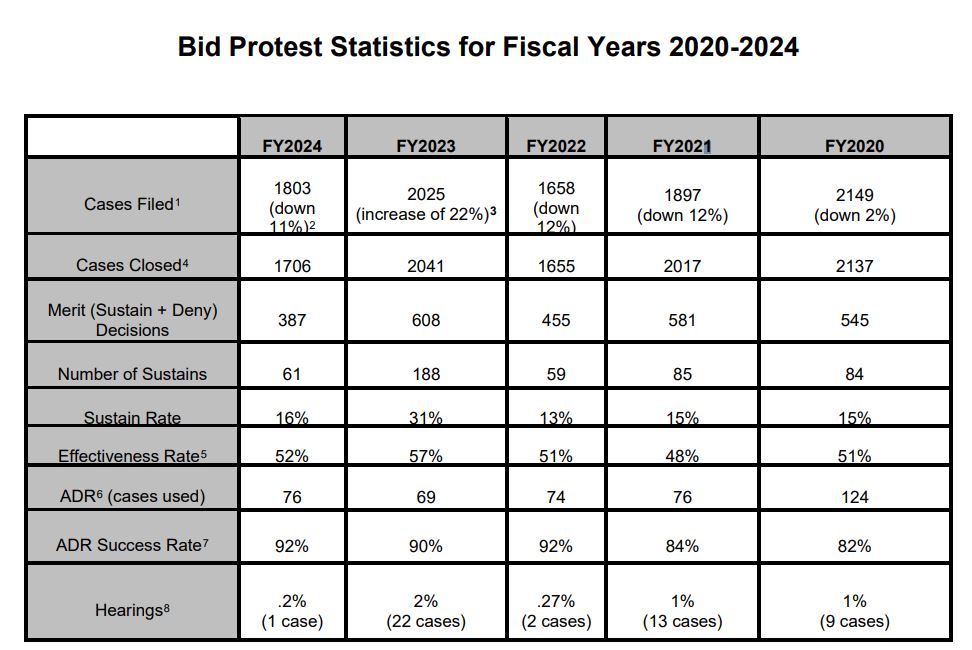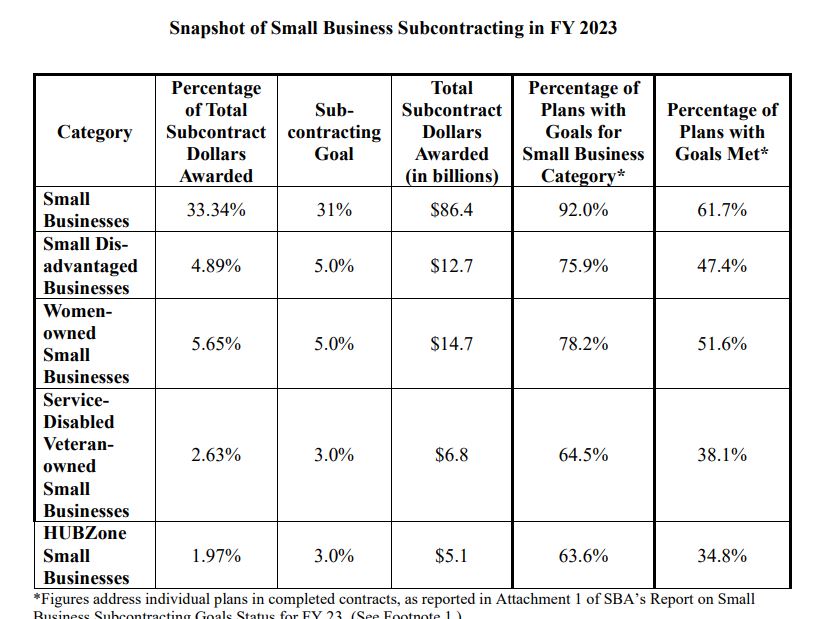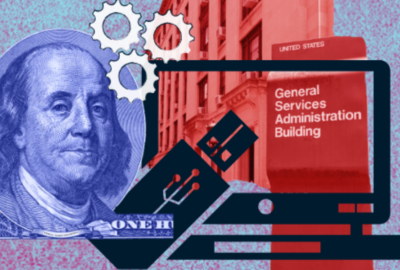As the Acquisition World Turns: OFPP turns heat up on primes
Several changes are coming to the federal acquisition sector including OFPP’s new requirements for procurement forecasts and subcontracting oversight.
Protests of contracts went down last fiscal year.
The micro-purchase threshold, the simplified acquisition threshold, the 8(a) sole source contract ceiling and several other similar acquisition limits are likely to increase in 2025.
And the oversight and accountability of subcontracting efforts by prime contractors is getting more scrutiny.
These are the latest among a host of story lines in the federal acquisition community. Welcome to another edition of As the Acquisition World Turns.
The Government Accountability Office’s annual report to Congress on the state of bid protests always is fascinating.
The raw numbers, of course, only tell part of the story. Yes, the number of protests are down, mostly due to the deluge GAO received in 2023 from the ongoing saga that is the CIO-SP4 governmentwide acquisition contract (GWAC) from the National Institutes of Health IT Acquisition and Assessment Center (NITAAC). In 2023, GAO received more than 350 protests alone over CIO-SP4.

Speaking of CIO-SP4, May will be five years since NITAAC released the initial solicitation to industry, which has now been modified dozens of times. A common refrain from many industry observers is maybe it’s time for NITAAC to throw in the towel and start over.
More NITAAC news, though it’s not what every bidder wants to hear — or maybe it is — director Brian Goodger has moved on to take a new role as the head of contracting activity at the Health Resources and Services Administration (HRSA). He was NITAAC director for almost two years and served as acting director for almost two years as well.
Ricky Clark, the NITAAC deputy director, is now acting director, a spokesperson confirmed.
The future of CIO-SP4 remains a big questions but that is a conversation for another time.
Let’s get back to GAO’s bid protest report. Two data points help us understand some important facets of federal contracting.
First, GAO continues to provide vendors with relief more than 50% of the time. The 52% effectiveness rate means vendors received some positive result, whether the agency took corrective action or whether they contractor won on the merits of its complaint, more times than not.
“Of the protests resolved on the merits during fiscal year 2024, our Office sustained 16 percent of those protests. Our review shows that the most prevalent reasons for sustaining protests during the 2024 fiscal year were: (1) unreasonable technical evaluation; (2) flawed selection decision; and (3) unreasonable cost or price evaluation,” GAO wrote in its report. “It is important to note that a significant number of protests filed with our Office do not reach a decision on the merits because agencies voluntarily take corrective action in response to the protest rather than defend the protest on the merits. Agencies need not, and do not, report any of the myriad reasons they decide to take voluntary corrective action.”
Second data point: The number of protests of task and deliver orders remained constant. In 2024, GAO heard 346 protests, which is down from 368 in 2023. But over the last five years, the number of task and delivery order protests ranged from a high of 417 in 2020 to a low of 344 in 2022.
With 55% of all contracts now going through task and delivery orders, according to market research firm HigherGov, is it time to reconsider the limits on task order contracts of at least $10 million for civilian agencies and at least $25 million for Defense Department contracts? GAO says in fiscal 2023 agencies spent $759 billion on contracts, an increase of about $33 billion. This means more than $417 billion went through task orders. The question is whether a vast majority of these task and delivery orders are not getting a sufficient amount of accountability and oversight?
Subcontracting scrutiny
Speaking of oversight and accountability, vendors should expect a lot more from the Office of Federal Procurement Policy over their subcontracting efforts.
Christine Harada, the senior advisor for OFPP, issued two new memos last Friday to bring more rigor to two areas of federal procurement that often lagged – subcontracting and procurement forecasting.
Agencies have long struggled to hold prime contractors accountable for meeting small business subcontracting goals. The Navy, for example, in 2020 launched such an effort by auditing its top 10 contracting commands on how primes met their subcontracting plans.
The Small Business Administration also issued a new rule in 2023 that limits to 50% the amount a small business can subcontract to a large business to prevent the contract being just a “pass through.”
The OFPP memo outlines 11 considerations for how agencies can add rigor to their oversight of vendors achieving their small business subcontracting goals. The reason, OFPP and SBA says, small firms are missing out on $1.5 billion in subcontracting opportunities.
“The Small Business Administration (SBA), in its most recent report to Congress on Small Business Subcontracting Plan Goals Status, states that of the more than 2,800 individual subcontracting plans associated with completed contracts, many reported zero goals for one or more of the small business socioeconomic categories,” OFPP wrote. “The report, which analyzes data reported to the Electronic Subcontracting Reporting System (eSRS), further points out that if contractors had met their subcontracting plan goals on prime contracts completed in fiscal 2023, small businesses would have received almost $1.5 billion more in subcontract awards and small business concerns owned and controlled by socially and economically disadvantaged individuals (SDBs) would have received an additional $850 million in subcontract awards.”

Among the things agencies should do to improve their oversight and accountability of small business subcontracting are to use past performance as an evaluation factor for future contracts and to challenges when a prime contractor submits a zero or low percentage for their subcontracting goals.
“Several agencies incorporate, or are experimenting with incorporating, a Small Business Participation Commitment Document (SBPCD) into the resulting contract. The SBPCD is the prime contractor’s proposed response to the small business participation evaluation factors. Reflecting the successful offeror’s small business subcontracting commitment in the contract can provide contracting officers with increased ability to hold the prime contractor accountable for the execution of their commitments to partner and subcontract with small businesses in individual contracts (if the offeror is a small business, the participation commitment would be at the prime contract level),” OFPP wrote. “Review of the contractor’s semi-annual individual subcontract reports (ISRs), or annual Summary Subcontract Report (SSR) for commercial plans, is an integral part of the agency’s responsibility to assess and document the contractor’s efforts to achieve its plan goals in Contractor Performance Assessment Reporting System (CPARS). The achievement of subcontracting goals should be consistently evaluated and performance documented in CPARS following the evaluation ratings. CPARS reporting should reflect not just subcontracting plan shortcomings but also achievements that meet and exceed expectations.”
No crystal ball needed
OFPP’s second memo also is focused on helping small firms, but from a government perspective. Harada instructed agencies to standardize and apply some consistency to their procurement forecasts.
Agencies have six deadlines over the next 18 months and seven ongoing actions they must take to improve their forecasting efforts.
In the short term, agencies must decide by Feb. 28 whether they will host their procurement forecast on a publicly accessible tool or use the Forecast of Contracting Opportunities (FCO) tool, hosted on AcquisitionGateway.gov by the General Services Administration.
Over the long term, agencies must establish a Community of Practice on Federal Procurement Forecasting consisting of designated agency leads and other agency forecasting stakeholders. This group should coordinate with and engage the Procurement Committee for E-government for feedback on potential adjustments to forecasting elements and standards.
OFPP says these new deadlines and steps come from a public crowdsourcing effort through the Challenge.gov platform last fall asking how to improve federal procurement forecasting.
“Campaign participants submitted feedback on forecast information that was strongly supportive of enhanced access through a centralized point, content standardization, timely updates and improved technological solutions,” OFPP wrote.
Dollar thresholds on the rise
Another boost likely is coming for small businesses, this time from the Federal Acquisition Regulations Council.
In a proposed rule from Nov. 28, the FAR Council wants to increase the dollar thresholds for 10 of the most commonly used procurement approaches like the simplified acquisition threshold and the sole source ceilings for socio-economic categories like 8(a), service-disabled veteran-owned small businesses, HUBZone and women-owned small firms.
The council says this is first increase of these thresholds since 2020.
Here are few of the biggest changes on tap:
- Micro-purchase threshold would increase to $15,000 from $10,000.
- Simplified acquisition threshold would increase to $350,000 from $250,000
- Sole source ceiling for socio-economic categories increases to $5.5 million from $4.5 million for most non-manufacturing contracts.
- The prime contractor subcontracting plan floor will increase to $950,000 from $750,000. The construction threshold will increase to $2 million from $1.5 million.
“The most impactful threshold escalations will likely be associated with the proposed increases to the micro-purchase threshold (MPT) and SAT. According to data from the Federal Procurement Data System (FPDS), the average number of federal awards valued at or below the current MPT ($10,000) during fiscal 2022 through fiscal 2024 was approximately 562,324. Those actions were awarded to approximately 18,440 unique entities. For the same period, FPDS data indicates that between the current MPT and the proposed threshold value of $15,000, another 49,321 awards were made to approximately 13,788 unique entities,” the council wrote. “While it is unclear how much duplication there is between the unique entities for each data point, the data illustrates an approximate 9 percent increase in the number of actions that would be considered under the MPT.”
The increase in the SAT would mean another 5,150 companies, or about 2% more, would be eligible for awards.
Comments on the proposed rule are due by Jan. 28.
Fraud alert
Finally, scammers are breaking out what seems to be a newly favorite tool: The fake request for quotes.
GSA’s inspector general issued an alert on Nov. 20 warning federal executives and contractors to be on the lookout for “scams involving disguised or “spoofed” email addresses that target small businesses and large businesses, including federal contractors registered in SAM.gov.”
The IG says vendors should pay special attention to RFQs for electronic equipment such as cell phones, laptops, tablets and other electronic devices, that seemingly come from a “.gov” address, but have a non-government domain extension such as “.net”, “.org”, or “.com.”
“The fraudulent RFQs also appear nearly identical to legitimate RFQs used by federal government agencies, often using the names of real agency officials. However, the fraudulent RFQs have illegitimate contact information, including email addresses and phone numbers that send any correspondence back to the fraudsters and not to any legitimate government entity,” the IG wrote. “If a business entity responds to the RFQ, the fraudster will accept the quote, provide a fraudulent purchase order (PO) and the business is provided with an address to which they can ship the devices. The PO will usually include the ‘signature’ of the federal official, likely copied and photoshopped from publicly available contract files. Payment is usually guaranteed within 30 calendar days of the goods having been received. The shipping addresses vary, but are typically commercial addresses accessible by the public, such as short-term storage companies, warehouses or freight forwarders. When the U.S.-based business submits an invoice for payment to the affected government agency, the invoice is rejected, or no response is provided to the business because the government agency has no records of the fraudulent procurement. At this stage, the business realizes it has been defrauded.”
This isn’t a new scam as one former federal agency CIO found out in May 2023. In the end, the company involved was smart enough to ship the laptops and tablets to the “requesting agency’s” headquarters instead of the commercial address so the only cost was time and shipping.
Copyright © 2025 Federal News Network. All rights reserved. This website is not intended for users located within the European Economic Area.
Jason Miller is executive editor of Federal News Network and directs news coverage on the people, policy and programs of the federal government.
Follow @jmillerWFED







